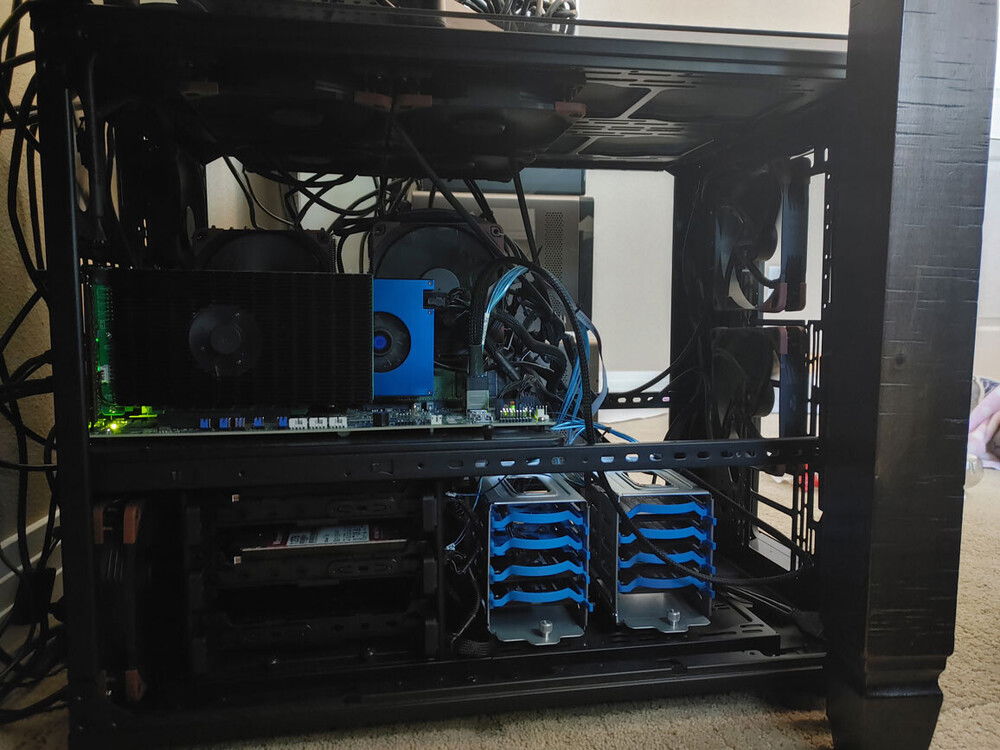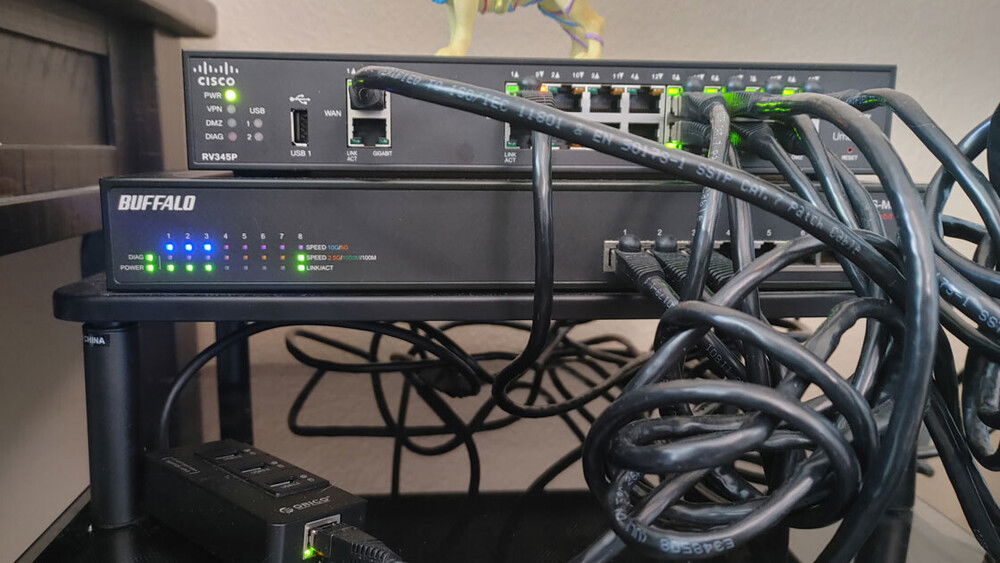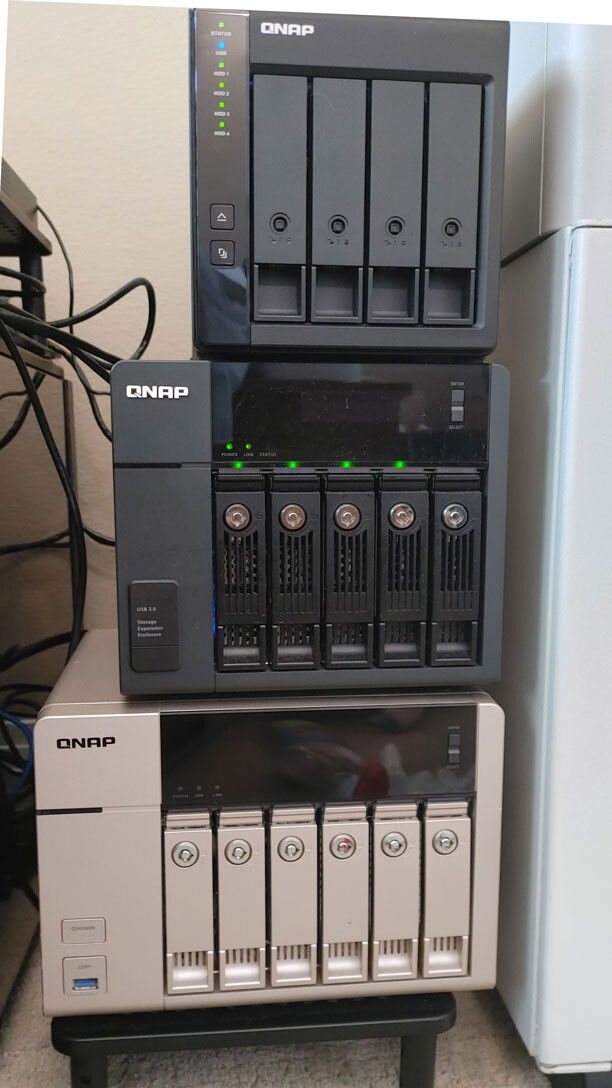Mastif - VM Host and Render
Mastif - My first EPYC Server Build for my medical practice and personal use. Built to be used as Virtual Machine Host for my Business and personal Video Render. On the VMware side it runs Server 2012 with 20 remote users from my office along with our Private Cloud for business data and 6 Win10 Desktops as VM's. On the Desktop side I use Windows 10 Pro for Workstation on the weekends to render videos and photography for personal use. Nothing fancy about the case but Build is clean, huge in size (88 lbs) and powerful in processing leading to its name Mastiff. I have built other servers and desktops over the last 17 years but this is the most ambitious and expensive build I have completed.
Case: Thermaltake - Level 20 XT
CPU: Dual Epyc 7702's ( 128 cores and 256 threads and 512 Mb L3 Cache - peak of 3.39 GHz achieved - All Cores)
MB: Supermicro H11DSi-NT ($760) (Hardware MB Listed below is incorrect)
Cooling: Noctua TR4 w/ Push Pull 140mm 3000 rpm fans x 2
Memory Nemix 32 Gb 3200 PC4 ECC Registered Server ram x 16 (512 GB) (Hardware Memory Listed Below is incorrect)
Fans: Noctua 140mm 3000 RPM fans for case x 10
Storage: 52 Tb of on Board Storage ( 8 Tb NVME + 24 Tb HDD + 20 Tb Sata SSD). Additional 84 Tb HDD as Network Tiered storage.
PSU: EVGA Supernova 1600w T2 80+ Titanium rated
Network: 2 ports 10 Gb networking on board and additional 2 ports via PCIe 8x Intel - X710T2 10Gb adapter.
Video: AMD Radeon Pro WX7100 PCie 16x ( AMD software tweaked for Virtual Machine pass through)
This Build Runs very cool and quite due to the really good quality of the Noctua fans. Peak CPU and VRM temperatures are 55 Celsius under heavy load and fans do not break 2200 RPM. Case and CPU fans typically run at 800 to 1100 RPM max. With BIOS tweaking, I was able to achieve a Cinebench R23 score for a 60 minute run of 92,423 - no CPU nor GPU throttling.
FYI: The PDF "Workload Tuning Guide for AMD EPYC™ 7002 Series" from the AMD website or Google search - published in 2019 shows BIOS settings to enhance performance. I found that I cannot much increase CPU nor Memory clock speeds beyond Stock but the Virtual Machine, Database and Rendering performances can be nicely manipulated. Interesting how Clock speeds are not the entire picture when it comes to performance.
Case: Thermaltake - Level 20 XT
CPU: Dual Epyc 7702's ( 128 cores and 256 threads and 512 Mb L3 Cache - peak of 3.39 GHz achieved - All Cores)
MB: Supermicro H11DSi-NT ($760) (Hardware MB Listed below is incorrect)
Cooling: Noctua TR4 w/ Push Pull 140mm 3000 rpm fans x 2
Memory Nemix 32 Gb 3200 PC4 ECC Registered Server ram x 16 (512 GB) (Hardware Memory Listed Below is incorrect)
Fans: Noctua 140mm 3000 RPM fans for case x 10
Storage: 52 Tb of on Board Storage ( 8 Tb NVME + 24 Tb HDD + 20 Tb Sata SSD). Additional 84 Tb HDD as Network Tiered storage.
PSU: EVGA Supernova 1600w T2 80+ Titanium rated
Network: 2 ports 10 Gb networking on board and additional 2 ports via PCIe 8x Intel - X710T2 10Gb adapter.
Video: AMD Radeon Pro WX7100 PCie 16x ( AMD software tweaked for Virtual Machine pass through)
This Build Runs very cool and quite due to the really good quality of the Noctua fans. Peak CPU and VRM temperatures are 55 Celsius under heavy load and fans do not break 2200 RPM. Case and CPU fans typically run at 800 to 1100 RPM max. With BIOS tweaking, I was able to achieve a Cinebench R23 score for a 60 minute run of 92,423 - no CPU nor GPU throttling.
FYI: The PDF "Workload Tuning Guide for AMD EPYC™ 7002 Series" from the AMD website or Google search - published in 2019 shows BIOS settings to enhance performance. I found that I cannot much increase CPU nor Memory clock speeds beyond Stock but the Virtual Machine, Database and Rendering performances can be nicely manipulated. Interesting how Clock speeds are not the entire picture when it comes to performance.
Color(s): Black
RGB Lighting? No
Theme: none
Cooling: Air Cooling
Size: E-ATX
Type: General Build
Hardware
Motherboard
$ 185.00
Memory
$ 41,600.00
Graphics
$ 103.99
Storage
$ 699.00
Storage
$ 748.90
PSU
$ 559.00
Case
$ 249.99
Case Fan
$ 395.40
Cooling
$ 219.98
Accessories
$ 347.91
Accessories
$ 248.14
Accessories
$ 94.50
Monitor
$ 488.00
Mouse
$ 74.49
Estimated total value of this build:
$ 56,213.00
Approved by:


